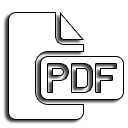H Health Belief Models-Based Health Education on Early Signs of Stroke (Fast): A Literature Review
DOI:
https://doi.org/10.33859/jni.v3i2.260Keywords:
Health Belief Model, Health Education, FASTAbstract
Introduction:Stroke is a important health problem in the world, each year 5.5 million people die from stroke, and 44 million people lost their lives and were disabled. The stroke attack has a golden period, that is, if a stroke patient is treated immediately, disability and death can be avoided. The golden period of stroke is within the first 4 hours after the patient experiences the symptoms of a stroke, the community needs to be given knowledge about the first signs and symptoms of stroke using the FAST method based on the Health Belief Model (HBM). HBM is a theory used in health education and health promotion. Aim: can understand evidence based in the form of literature review on the effects of HBM-based health education on early signs and symptoms of stroke with the FAST method.
Methods: The study was conducted by searching journals in the database "Scopus, Science Direct, and ProQuest" using predefined keywords, then the research journals were reviewed, There were five journals that met the criteria for a scientific review. The five journals then reviewed their designs, samples, treatments, and results using a critical appraisal.
Result : Based on the analysis conducted, the results of the literature review state that the impact of HBM-based health education has an effect on increasing knowledge in the community.
Conclusion : HBM can increase knowledge with given innovative intervention.
Downloads
References
Amano, T. et al. (2014) ‘Stroke Education Program of Act FAST for Junior High School Students and Their Parents, Journal of Stroke and Cerebrovascular Diseases, 23(5), pp. 104-1045. doi: 10.1016/j.jstrokecerebrovasdis.2013.08.021.
Babatunde, O. T., Marquez, S. and Taylor, A. (2017) Osteoporosis Knowledge and Health Beliefs Among Men in Midlife Years, Journal of Nutrition Education and Behavior, 49(9), pp. 759-763.e1. doi: 10.1016/j.jneb.2017.05.346.
Bray, J. E. et al. (2015) ˜Effect of Public Awareness Campaigns on Calls to Ambulance Across Australia. doi: 10.1161/this.
Horwood, H., Williams, M. J. A. and Mandic, S. (2015) ˜Examining Motivations and Barriers for Attending Maintenance Community-Based Cardiac Rehabilitation Using the Health- Belief Model’, pp. 980–987.
Kouhpayeh, A. et al. (2017) Effect of an educational intervention based on the model of health beliefs in self-medication of Iranian mothers, 35(1), pp. 59-68. doi: 10.17533/udea.iee.v35n1a07.
Liu, Y. et al. (2021) ˜Association between illness perception and health behaviour among stroke patients: The mediation effect of coping style-, Journal of Advanced Nursing, 77(5), pp. 2307-2318. doi: 10.1111/jan.14761.
Noorbakhsh, A., Mostafavi, F. and Shahnazi, H. (2017) Effects of the Educational Intervention on some Health Belief Model Constructs regarding the Prevention of Obesity in Students’, 5(44), pp. 5561-5570. doi: 10.22038/ijp.2017.24632.2077.
Peterson, C. L. et al. (2017) Sonographer Scanning Practices and Musculoskeletal Injury: Evaluation of an Occupational Health Issue Using the Health Belief Model. doi: 10.1177/8756479317727460.
Pitthayapong, S. et al. (2017) Community Based Program for Family Caregivers for Post Stroke Survivors in Thailandâ, Asian Nursing Research, 11(2), pp. 150–157. doi: 10.1016/j.anr.2017.05.009.
Rochmah, T. N. et al. (2021) Economic burden of stroke disease: A systematic review, International Journal of Environmental Research and Public Health, 18(14). doi: 10.3390/ijerph18147552.
Downloads
Published
How to Cite
Issue
Section
License
Copyright (c) 2023 Journal of Nursing Invention E-ISSN 2828-481X

This work is licensed under a Creative Commons Attribution 4.0 International License.












